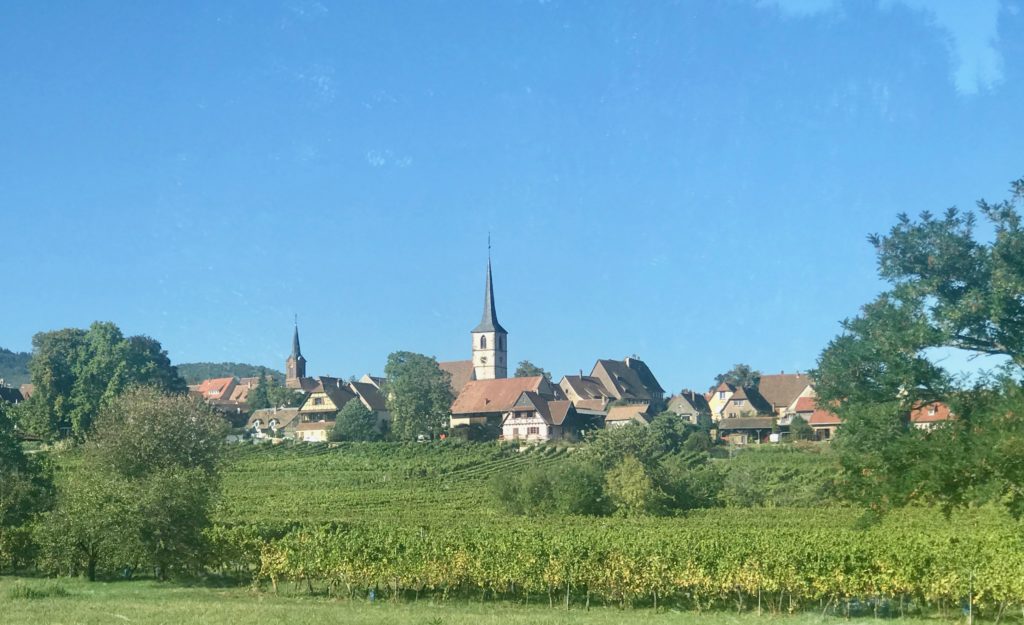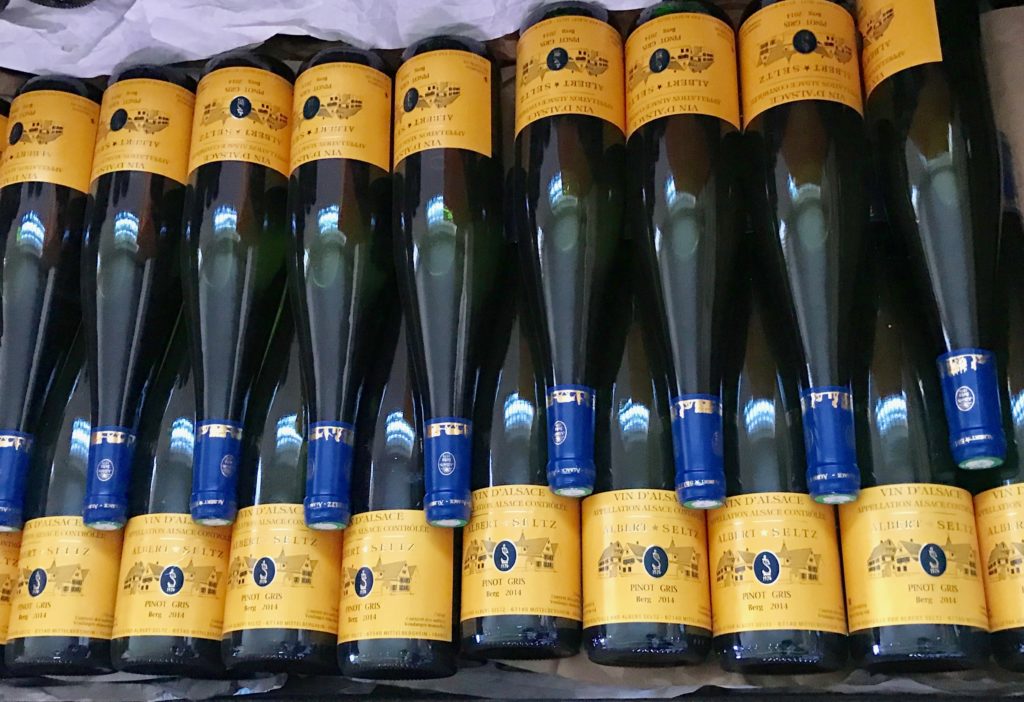
By Patrick Hunt –
One of the oldest and respected domaines in Alsace, already known for some of the oldest continuing wineries in the world, is Domaine Albert Seltz in Mittelbergheim from 1576, with fourteen generations of wine production for highly sought-after wines. The current patriarch Albert took over from his father in 1980 at age 19. The wine village of Mittelbergheim in the Bas-Rhin has a long history of wine production as documented in the Weinschalbuch recording vintages since the late 8th c. under the Carolingian administration of Charlemagne himself who helped establish Frankish Rhine viticulture in what became Alsace and the Rheingau of Germany.
I had the pleasure of a degustation at Albert Seltz in late September 2018, meeting the Seltz Family and tasting at least six of their stellar wines with Albert, including his famous Sylvaner de Mittelbergheim 2016 for which he advocated its acceptance and status in 2005, now also a grand cru, as he was the primary force for the National Institute of Appellation’s certification of his Grand Cru Zotzenberg Sylvaner. The others tasted were Albert Seltz Riesling Andlaugass 2009, Albert Seltz Le Granit du Rebbuehl Riesling d’Andlau 2011, Albert Seltz Gewurtztraminer ‘Mon ruisseau de Zanzibar’ 2013 (spicy as the “stream of Zanzibar” allusion suggests), Albert Seltz Pinot Gris 2014 and my favorite, Albert Seltz Grand Cru Zotzenberg Riesling 2006, which bottle I also left with to share with fellow National Geographic colleagues.
Here are just a few notes about individual Albert Seltz wines, all worth cellaring as long as possible. The Sylvaner de Mittelbergheim is from 100% Sylvaner grape, a pale bright yellow wine from half a century old vines on sandstone and clay. The Gewürztraminer is intense yellow and fragrant and of course spicy as its name implies, with hints of ginger and even cinnamon, 100% Gewürztraminer grape, from a 20 year old vineyard. The Reserve Riesling is 100% Riesling grape making a golden wine from 40 year old vines grown on clay and calcareous soils. The Grand Cru Zotzenberg Riesling is grown in a calcareous basin and the 2006 was hugely floral, retaining high acidity from the limestone and had citrus notes of lime and lemon.

Since becoming chief of production, Albert Seltz greatly reduced his total area under vines (11 hectares, 27 acres) and thus yields in converting to sustainable agriculture with minimal intervention, using only local aerosol yeasts and aging sur lie. Albert’s grand crus (e.g., Riesling, Sylvaner and Gewurztraminer) have no sulphur and his wines have been certified organic since 2015. While other Alsatian villages like Riquewihr and Eguisheim may be more picturesque and thus touristy, few villages have the venerable history of Mittelbergheim and even fewer have the highest quality of Albert Seitz, well worth a degustation visit when in Alsace.




